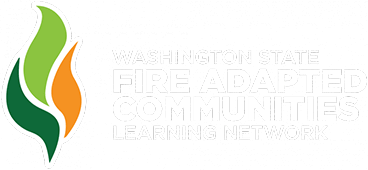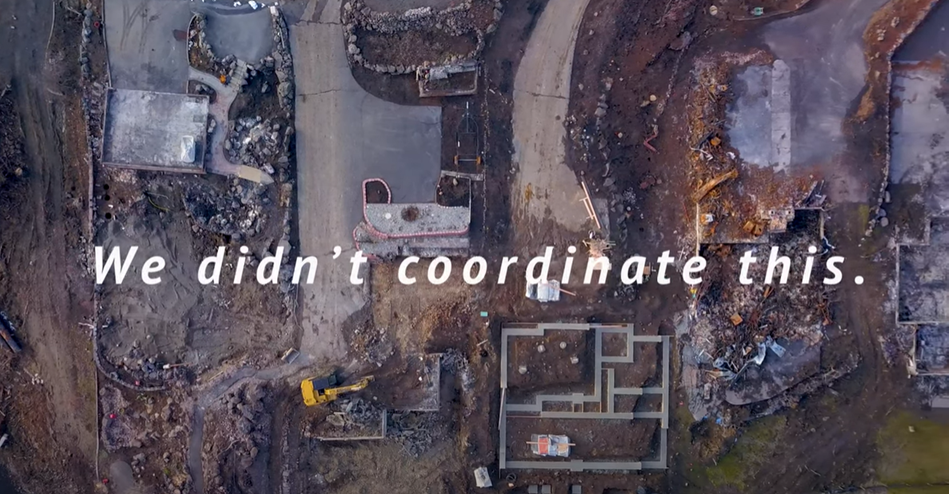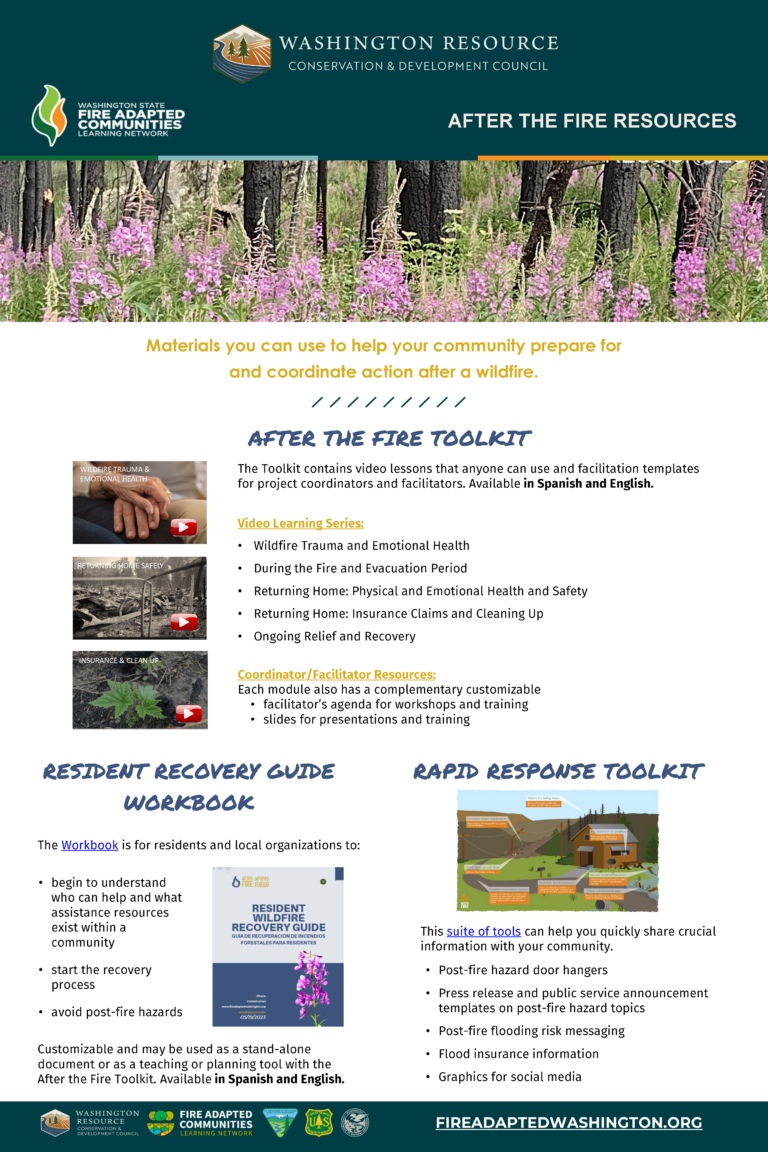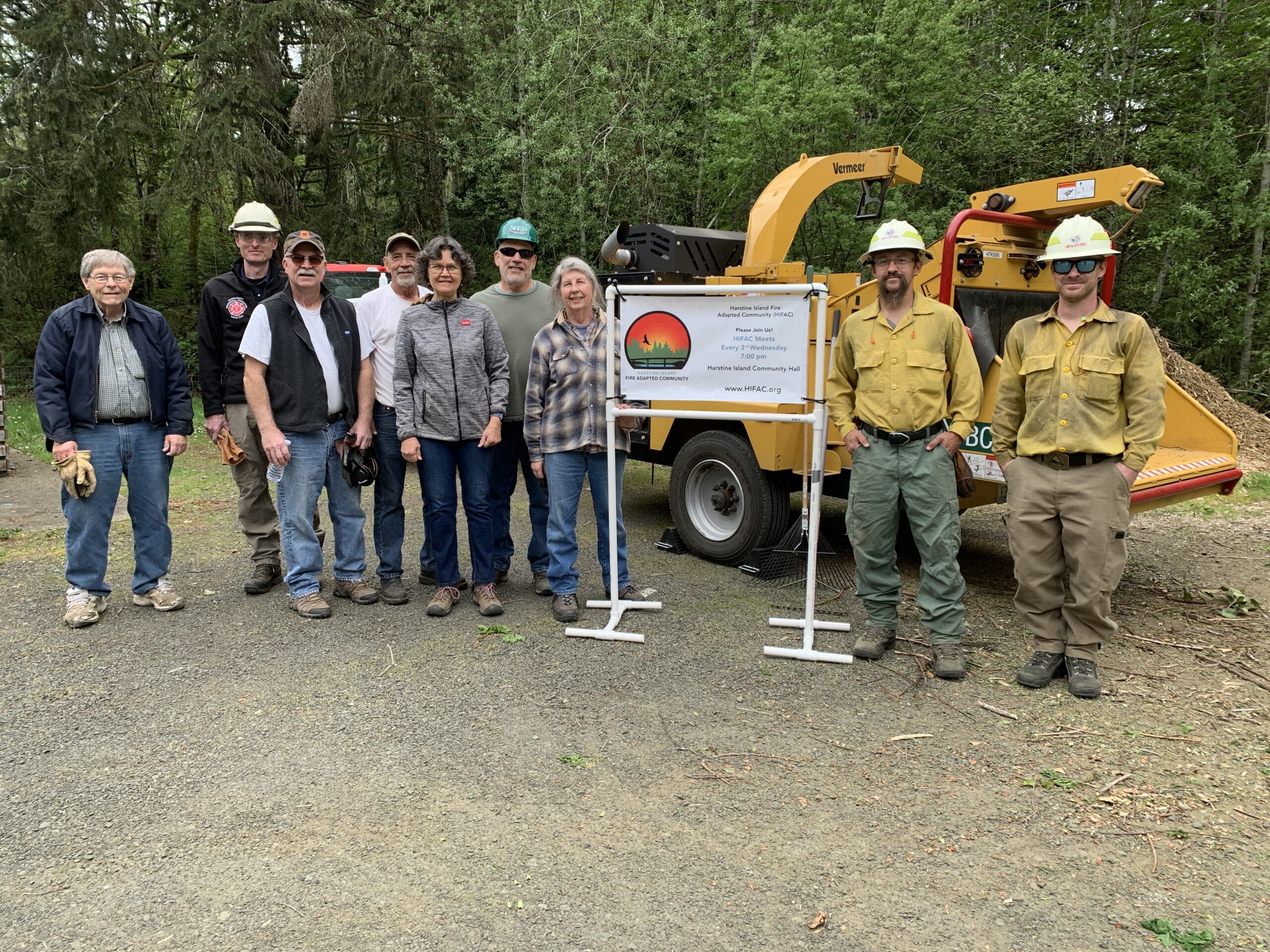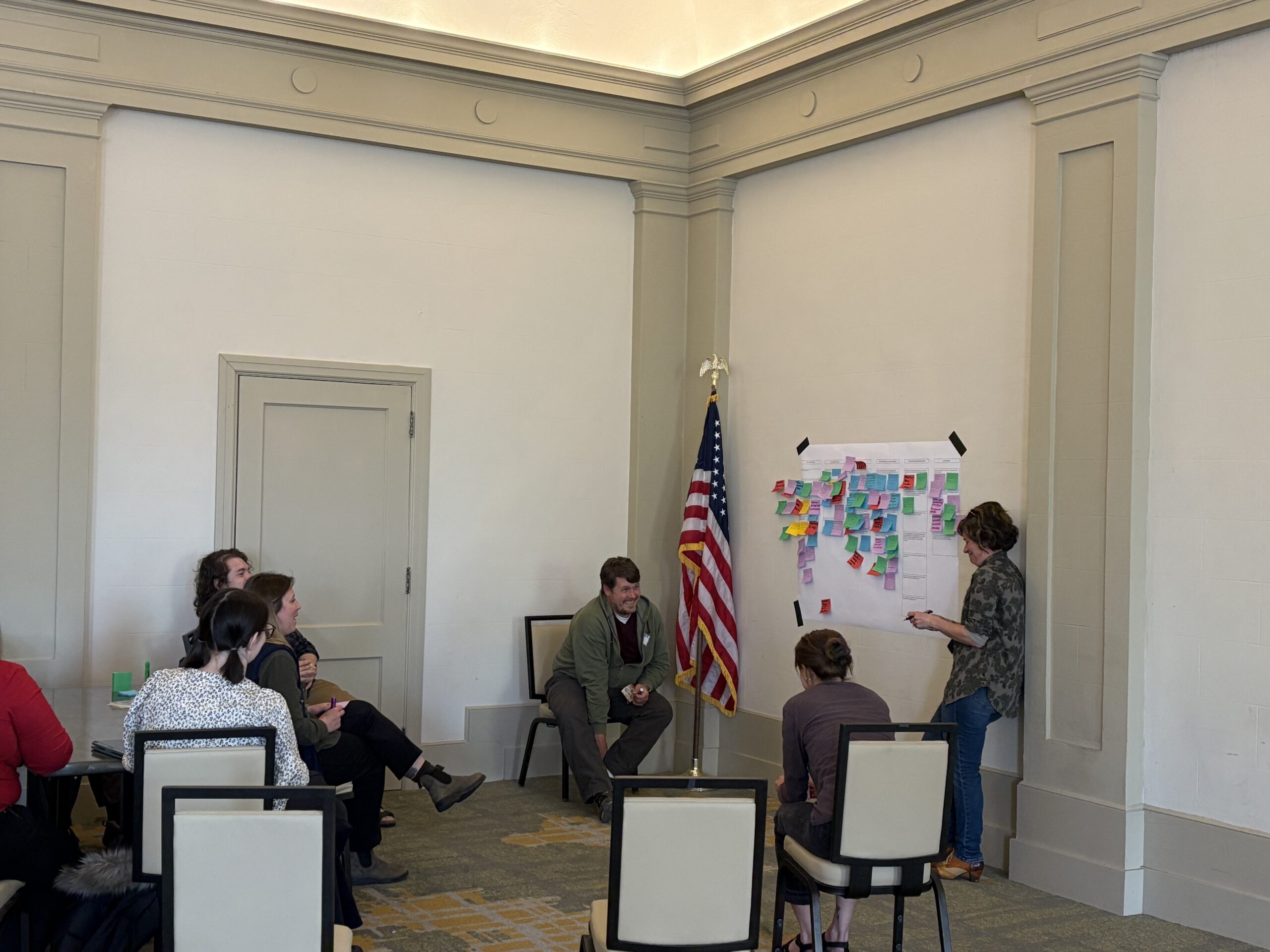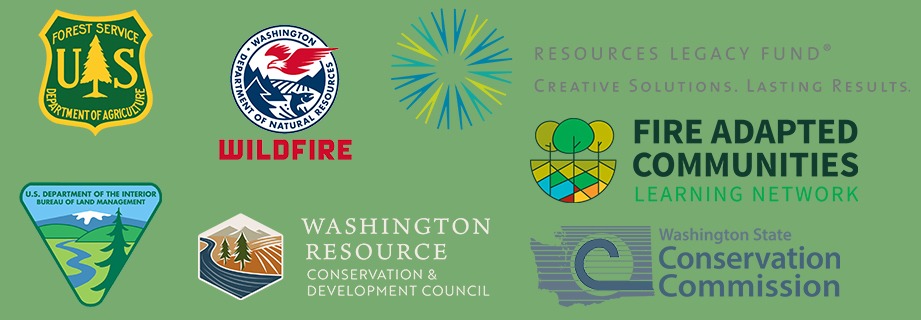On April 30, 2024, approximately 60 people gathered in Spokane, Washington, for a post-fire recovery workshop to address recovery and post-wildfire response. Hosted by the Washington Department of Natural Resources (DNR) and Fire Adapted Communities Learning Network (FAC Net), the post-fire workshop convened stakeholders from agencies and local organizations to share insights, forge bonds within the post-fire space to improve response and recovery, lay the groundwork for more enhanced coordination across local, state, and federal entities, and ignite ideas and identify strategies to foster greater wildfire resilience in Washington.
Learning from Adversity
The workshop opened with a presentation from Terri Cooper, the Mayor of Medical Lake. Located just ten miles southwest of Spokane, Medical Lake was heavily impacted by the 2023 fire season, losing 240 homes and displacing 1,000 people. Mayor Cooper’s impassioned talk reiterated the critical need for all communities to pre-plan for recovery and reminded us of the resilience embedded in every community’s core and heart.
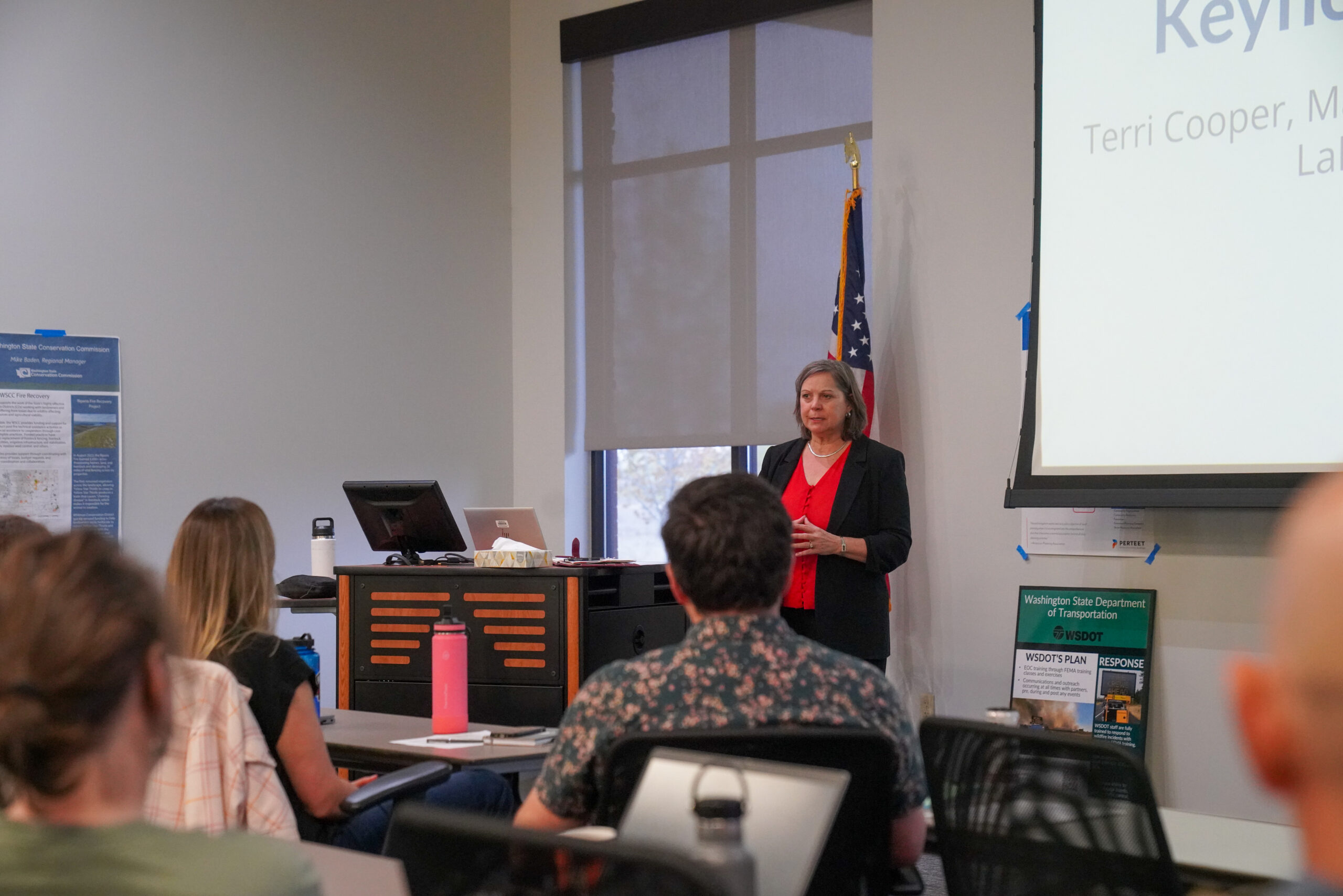
Mayor Cooper shared several recommendations based on her community’s experience, many of which every community in Washington may consider.
- Have a plan for maintaining and protecting critical infrastructure, including water, sewage, and electricity. During the Medical Lake Fire, people left their sprinklers on, draining the reservoir and damaging water systems. The excess water mixed with hazardous chemicals and drained into the treatment plant – requiring all hands on deck to manage the overwhelmed water system.
- Develop a detailed multi-step evacuation plan. In Medical Lake, a shift in winds changed the fire’s path, resulting in evacuees’ relocation from one safe zone to another shelter, only adding to the chaos of the fire response.
- Relationships matter. Recovery ultimately happens at a community level. Staying connected to local nonprofits who can step in and help individuals in their time of need is crucial in building resilience and supporting recovery efforts.
- Establish a local recovery fund. One of the most difficult and time-consuming aspects of recovery is acquiring timely funding, especially during a crisis. The city of Medical Lake has started a local recovery fund in which they will invest a small amount each year to support future disaster recovery efforts more efficiently.
- Work with local, state, and federal partners to consider how to make emergency funding for wildfire recovery more accessible. This is difficult to navigate and, yet is critical to have funding accessible early in the process. Explore how you can work with decision-makers to attain and streamline financial support on both an individual and community level.
Mayor Cooper’s closing remarks resonated deeply. Prior to the fire, models, risk maps, and suppression difficulty models did not indicate that the community was at high risk. The Medical Lake community experience served as a poignant reminder of the imperative to begin recovery planning before disaster strikes. Wildfires will continue to impact Washington’s communities, and together we can work toward a future where no community faces the aftermath of fire alone.
Networking was the Name of the Game.
Throughout the rest of day one, participants delved into key discussions: Coordination During Post Fire Response and Recovery, Capacity Building for Post Fire, Landowner Support, Reforestation, and Storytelling. Each group identified what works and does not work well in facilitating and supporting recovery actions. Groups brainstormed existing questions, potential avenues for new strategies, areas of growth, and actionable commitments. Themes of cohesive communication and messaging, better coordination and partnership between state, federal, and local entities, storytelling, and community engagement with organizations, citizens, and landowners emerged as pillars of supporting post-fire resilience.
Workshop participants participated in poster sessions to share what post-fire resources exist within Washington state. The Washington Resource Conservation and Development Council/Washington Fire Adapted Communities Learning Network (WAFAC) shared information about WAFAC’s post-fire recovery toolkit and Resident Recovery Guide Template. Image: Washington Resource Conservation and Development Council.
Coalescing Forces for Resilience
Day two was geared toward aligning state and federal agencies in a coordinated approach to post-fire recovery in Washington. The state Emergency Management Division (EMD) presented the Washington Restoration Framework. This Framework provides guidance on potential recovery actions and resources available to support disaster recovery. While this framework needs to be updated, it can serve as a jumping-off point for creating a more formal method of coordination across the agencies and local organizations involved in post-fire recovery.
In breakout groups, participants identified gaps in recovery efforts and brainstormed potential solutions across four key topics: community assistance and recovery, individual and landowner recovery, analysis and recommendations, and interagency coordination. Themes emerged of better modes of information sharing and education, increased transparency and communication, and increased efforts toward pre-planning for recovery. The desire to engage in post-fire recovery work exists amongst stakeholders, but there has been a lack of fora such as this to discuss how to begin to better collaborate in order to leverage collective resources, knowledge, and capacity. Continuing to bring different players together and forge partnerships will be key in ensuring this work moves forward.
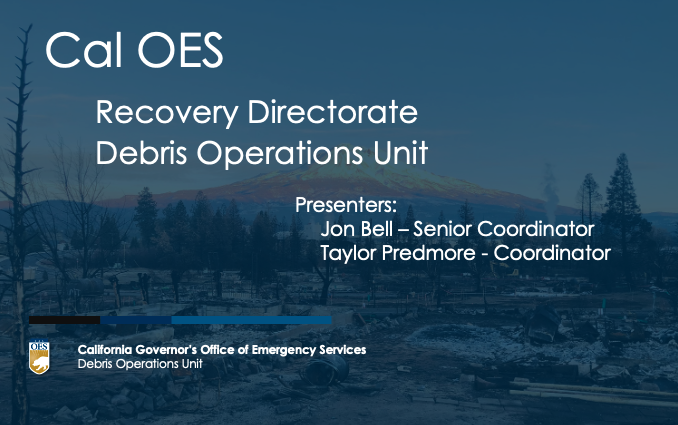
As the gathering came to a close, a resounding message echoed through the room: the recovery journey is evolving and dynamic, and to do better, knowing and understanding local, state, and federal roles, systems, and processes is essential. Lessons underscored the need for effective coordination – which will take time and commitment. One of the biggest gaps now is the communication and dissemination of existing information and knowledge. Immediate next steps will require developing cohesive communication tools and pathways between community members, organizations, and government bodies. While challenges lie ahead, there was palpable energy in the room to find ways to better support the organization, funding, and implementation of post-fire recovery and response actions.
Lessons Learned
There is a lot of desire to increase post-fire recovery coordination between agencies and organizations, but little capacity or knowledge of how to do so. Collaboration will require commitment and concerted effort from all stakeholders and entities engaged in wildfire recovery to be successful. At a broader scale, recovery needs to be prioritized alongside prevention and response across the state.
Planning is essential. Having plans in place to not only respond to wildfire, but also recover, is vital, because beginning from square one in the aftermath of a fire is very difficult. This includes planning for evacuation, infrastructure protection, utilities maintenance, debris removal, and more.
Accessing emergency funding in a timely manner is a major challenge in wildfire recovery. Systems of financial assistance and support may need to be restructured in the long term to ease burdens on impacted communities.
Washington’s wildfire response systems are robust and effective. Recovery, on the other hand, is a process that has received relatively little attention, but is equally as important. There is a lot to learn.
